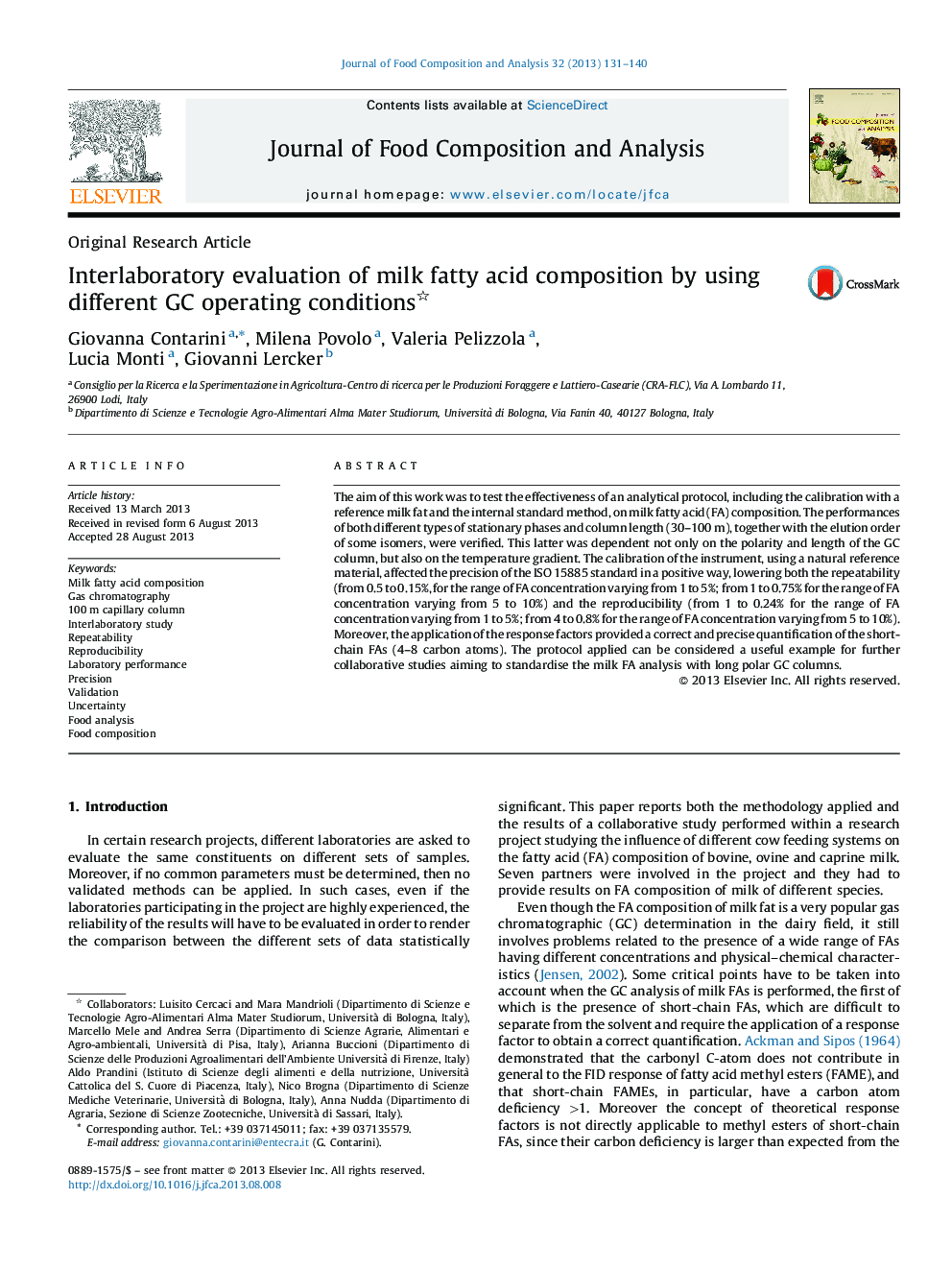| کد مقاله | کد نشریه | سال انتشار | مقاله انگلیسی | نسخه تمام متن |
|---|---|---|---|---|
| 1218459 | 967606 | 2013 | 10 صفحه PDF | دانلود رایگان |

• The performances of short (30 m) and long (100 m) capillary columns were evaluated.
• Synthetic and natural standards were adopted to calibrate the instruments.
• Seven laboratories participated in the collaborative studies.
• Repeatability and reproducibility figures of milk fatty acids were calculated.
• Adoption of natural standard and IS method lowered the interlaboratory variance.
The aim of this work was to test the effectiveness of an analytical protocol, including the calibration with a reference milk fat and the internal standard method, on milk fatty acid (FA) composition. The performances of both different types of stationary phases and column length (30–100 m), together with the elution order of some isomers, were verified. This latter was dependent not only on the polarity and length of the GC column, but also on the temperature gradient. The calibration of the instrument, using a natural reference material, affected the precision of the ISO 15885 standard in a positive way, lowering both the repeatability (from 0.5 to 0.15%, for the range of FA concentration varying from 1 to 5%; from 1 to 0.75% for the range of FA concentration varying from 5 to 10%) and the reproducibility (from 1 to 0.24% for the range of FA concentration varying from 1 to 5%; from 4 to 0.8% for the range of FA concentration varying from 5 to 10%). Moreover, the application of the response factors provided a correct and precise quantification of the short-chain FAs (4–8 carbon atoms). The protocol applied can be considered a useful example for further collaborative studies aiming to standardise the milk FA analysis with long polar GC columns.
Journal: Journal of Food Composition and Analysis - Volume 32, Issue 2, December 2013, Pages 131–140